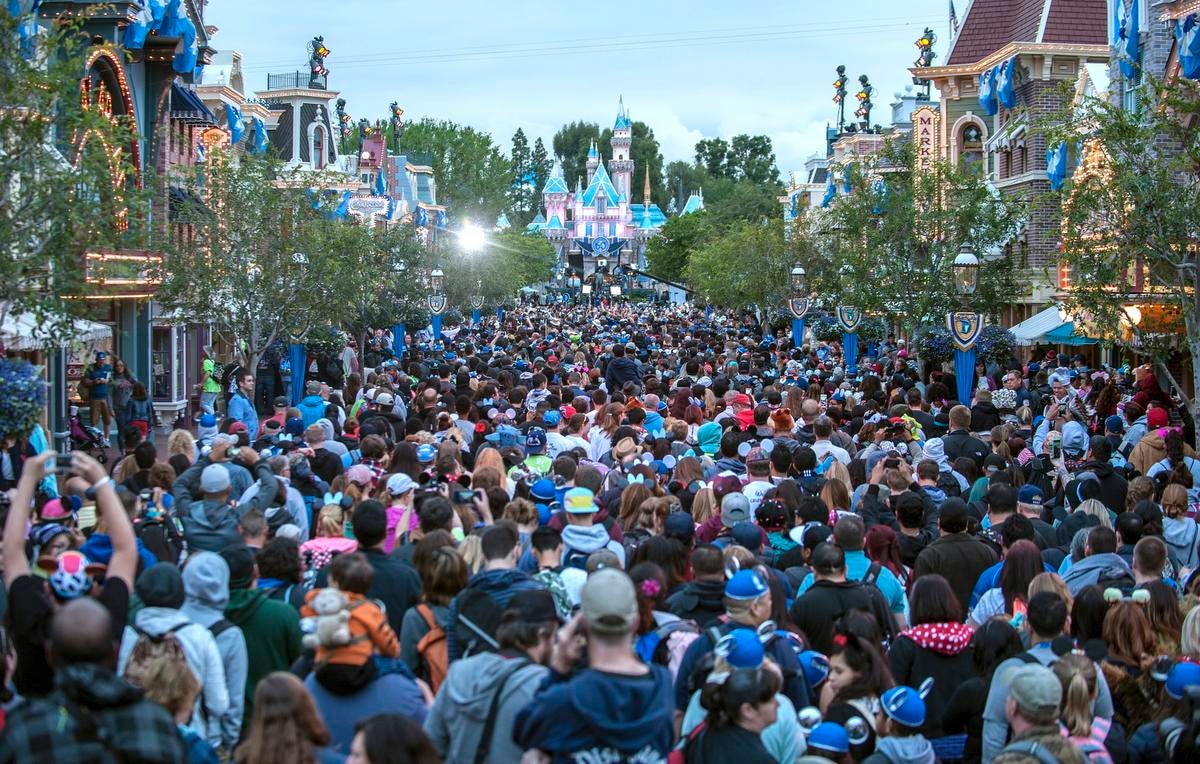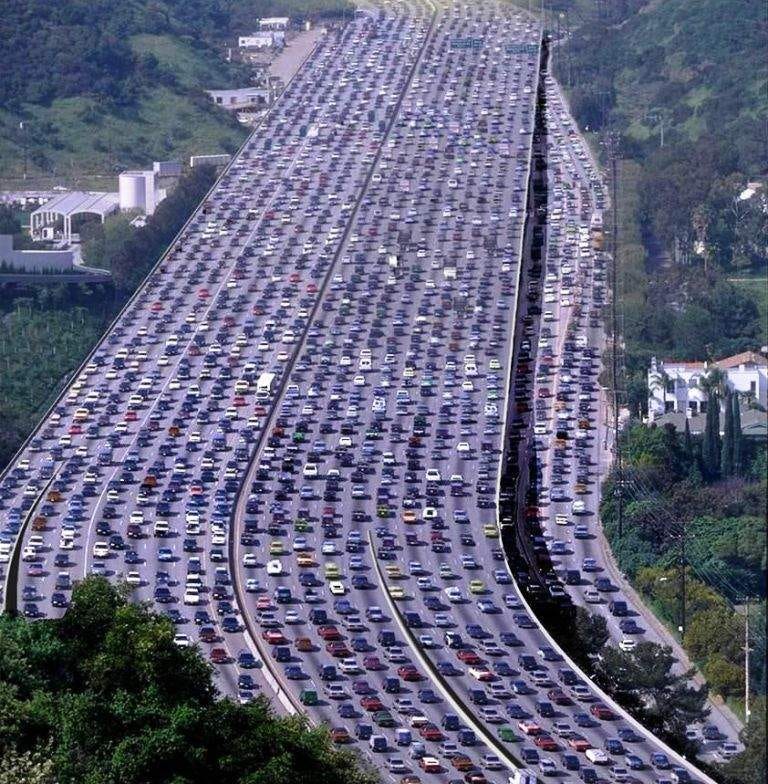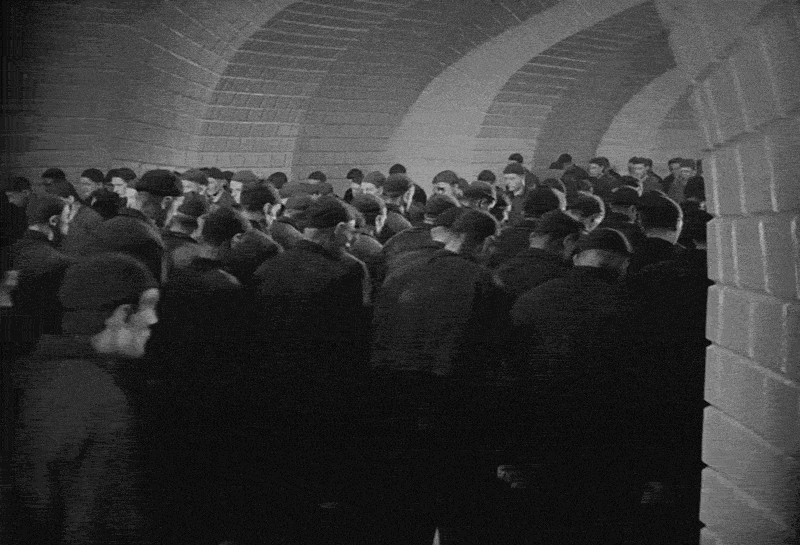The Net Neutrality Fight Is Set to Drive onto American Roads
THE NET NEUTRALITY FIGHT IS SET TO DRIVE ONTO AMERICAN ROADS
Remember Tron?
Depending on your age you’ll say, “Yes” and still maybe mean a different movie. It doesn’t matter, whichever Tron you remember opened on a lovely visualization of data moving through an integrated circuit. Abstracted pulses of light running along circuit traces which then gracefully morphed into, wait for it… cars driving on city streets.

TRON opening sequence: the same metaphor, 2010 & 1982
That metaphor. I was 19, a film student, a complete sci-fi nerd from planet 10, in awe of the artistry and technology in that film, but I still thought that metaphor was stupid in 1982.
And I have subsequently thought it was stupid in every movie ever since that tried to make that same tired metaphor work.
On the one hand, you have the complex perfection of billions of instantaneous electrical pulses optimized, coordinated and controlled by a central brain with a single programatic mission. And on the other you have a bunch of dumb, disconnected, meat-eaters, steering boxes of plastic and metal in lurching, uncoordinated congestion, independently randomized by a near-infinity of irrelevant, abstract priorities, one of which is “oh…I gotta ‘member ta pick up that second can of Cheez Whiz for Dave,” totally unaware of what’s happening around them.
As a metaphor it’s got all the intellectual gravitas of every stoner’s dawning wonderment: “…soooo…wait… that means that our whole solar system could be like one tiny atom in the fingernail of some other giant being?”

Animal House: Pinto discovers the metaphorical power of weed.
No, it couldn’t actually, because planets aren’t atoms and... forget it, just eat your Cheez Whiz.
But that was then.
And everything is about to change.
With self-driving cars that metaphor is not just better, it will be nearly exact. I mean — it practically won’t even be a metaphor anymore.
With self-driving cars, we suddenly jump from a crude, object-oriented environment where every car is controlled independent of all the others in haphazard chaos, to a perfect, centrally controlled paradigm where every car is issued instructions in graceful coordination with all the others. Suddenly, this act of controlling the flow of traffic on our streets is not just “like” controlling the flow of data in a computer or across the internet, it will be controlled exactly the same way — just a lot slower. Algorithms that control traffic in one can essentially control the other. Speed of transfer aside, the fact that each data-packet happens to have wheels and some human meat inside is largely irrelevant. The entire process operates in a nearly identical fashion.
A great piece by Fernando Livschitz
IP addresses are street addresses, application protocols signify main categories of road use (daily commuting, shipping, emergency, etc.), routers are intersections & roadsigns, NSPs (Network Service Providers) are the cities that build and maintain roads, cars are packets, and so I guess we’re the data.
Ok, the metaphor is getting stretched thin, but there is one more factor. Many have reasonably speculated the end of car ownership, with “peak car ownership” happening sometime around the next 3 years. Following that is the expectation that ownership demand will drop precipitously as increasingly convenient, and less expensive on-demand services take over.
So with central control and the likely provision of cars on-demand, access to city road-transportation will become a complete, end-to-end B2C service, nearly identical to that of Internet and Mobile service providers who bundle hardware and services on NSP backbones.
As a business model for such a system, many have contemplated the expansion of the Uber/Lyft on-demand, pay as you go approach. But I don’t buy it. There are few digital services today that rely on pay as you go. Especially when you factor in ongoing maintenance and unexpected traffic surges resulting in cost/ride increases. It makes the cost/ride inconsistent, and as an approach for commuters to work, school, daycare or the other daily requirements of life, I think most regular users of such a system will seek predictability. And let’s face it, service providers love it when customers pay for things they don’t use.
So instead, ride providers will be incentivized to offer (cue ominous music)
…subscription plans.
There are few things more despised, that trigger more cynicism, annoyance or confusion — by design it seems — than choosing a new mobile service subscription.
And make no mistake — you’ll feel exactly the same way when it comes time to sign up for a new ride subscription.
Come on, you know how this is going to play out. You’ll have to choose from countless contrived tiers and features relative to your number of family members, regular destinations and requirements such as: number of included rides and miles per month before overage fees kick in, trips to “city-zones 1 through 6”, number of “Fast Rides®” which will temporarily prioritize your ride and make room through traffic along optimum routes. There will also be the choice of cars of varying quality, style and form-factor, single rider commuters, ride-share, family vans, and luxury models, those with refreshment services, entertainment and work stations.
“Fast Rides®” which will temporarily prioritize your ride and make room through traffic along optimum routes.
With central control we will also have something new to factor in: guaranteed arrival times. Valuable that, especially for commuters. In short, you’ll have to choose from priority services of all kinds that each potentially compete with one another in such indecipherable, convoluted ways that we consumers will be incentivized to spend as much as we can afford so our service doesn’t get us to work or outings late when we really need it, or during peak hours, and which don’t result in exorbitant overage fees, all covered in numerous pages of fine print, please just initialize here, and here, and down here.
Chances are it will be more complicated than selecting a new mobile plan, and those aren’t known for being particularly transparent.
Take Sprint.
Today, Sprint offers a plan called “Unlimited Basic,” which, being “unlimited” and all, sounded fine to me, until I noticed that one can choose “Unlimited Plus”.
…I’ll be completely honest, I was still trying to imagine what one could add to “unlimited” that would be worth paying more for, but kept reading and apparently it doesn’t stop there. You can even choose “Unlimited PREMIUM: Everything you want from Unlimited, and so much more!”. Clearly “unlimited” is lacking.
Speaking of “more”, AT&T apparently tried to one-up Sprint by offering a base plan already called: “AT&T Unlimited &More” which offers not only unlimited, but “more” too, at the base tier. And because “more is more”, there’s “AT&T Unlimited &More Premium”. For all of your gold-plated more than unlimited needs.
Verizon, on a virtual rocket ship to planet Unlimited, takes you into the stratosphere with “Go Unlimited”, “Beyond Unlimited” and “ABOVE UNLIMITED!”
Clearly the industry needs to switch its thesaurus out for a dictionary.
Be that as it may, I worry our future will include such a cryptic choice with rides.
And if so, I hope you see what I see. And really, this is the point of this piece:
Every dynamic we face today, in particular the market dynamics that led us as a country to have to defend Net-Neutrality, will suddenly exist on American roads.
Perhaps to even a greater degree, because we will be moving our bodies, our lives and careers, not just data, and because the system will absolutely have to prioritize riders in *some* way to control traffic, and because our arrival time is so crucial to our ability to perform in life. All of this will add up to make it even harder to ensure that access to roads, rides, and thus even daily life, is fair.

Disneyland at capacity is not the "Happiest Place on Earth".
Some have suggested that sheer central control will mitigate traffic bottle-necks. “Traffic won’t happen”. But I disagree. Traffic is traffic, and the central system doesn’t control demand. I’ve spent decades studying traffic flows in theme parks. No matter how orderly, Disneyland on a cold day is a significantly different experience than Disneyland at capacity. Sure you can optimize to a point, but in the end it’s a sheer bandwidth issue. To wit, when digital destination demand surges (eg. web traffic), we instantly duplicate the digital destinations and provision new lines to serve it, but you can’t duplicate real-world destinations and roads. Higher than expected demand will naturally require some percentage of riders to be routed on longer, more indirect routes, while lucky others will ride direct.

Optimization helps, but demand against bandwidth dictates traffic.
When the Internet was new, it was somewhat conceptually easy to demand net-neutrality. But consumers have already accepted for-pay privilege on roads for years: toll roads, fast-pass toll lanes, congestion zones, parking passes, etc.
Wealthier consumers may very well even demand premium speed at a price because for the first time such a thing will be possible. Even at rush hour. For the first time, a centrally controlled system could divert any vehicle to any route on the fly, and would be able to guarantee arrival times for premier customers — traffic be damned. This would cause inconvenience for lower tier riders who would face longer rides, diversions from optimal, direct routes and a requirement for earlier departure times. An arrival time may still be “guaranteed” for these lower tiers, but it will still be a longer ride than the higher-paying customer.
And although one can find many pockets in American life where such for-pay privilege exists, I don’t think we have ever faced an example that would so ubiquitously, and so personally, draw into focus the difference in our economic classes for more people at once, at such a high rate of incidence than by privilege being literally enacted before our eyes at every turn. It would reveal a visceral, demoralizing, rigid, functional kind of class “Metropolis” that does not exist on roads today even between the drivers of say, an old, rusted 1975 VW Rabbit or a brand new Aston Martin. Today, both those drivers and their respective cars flow to work with the same priority, at the same speed, hit the same traffic, and obey the same rules of the road, just with different degrees of comfort. Today, by and large, we have an organic type of “Road-Neutrality”.

Fritz Lang’s Metropolis, the classes above.

Fritz Lang’s Metropolis, the classes below.
But centrally controlled priority service tiers would change all that, and because being places is such a fundamental requirement for living in society, the tier you can afford will change your life. Perhaps even more profoundly than having a nice house in a friendly neighborhood.
Despite all this, in my cynicism, I think the personal benefits that will come from privilege will be just too attractive for wealthy consumers and the companies who would serve them, to pass up.
THE PLANS
To give you a taste of the kind of choices we may have to make in the future, here is a theoretical subscription tier offering for my new Ride service called “Metropolis”:
ON-DEMAND
Pay-as-you-go is the highest average cost for taking a ride on roads.
SUBSCRIPTION PLANS
From single-rider through family plans, subscriptions will offer more rides, riders and benefits to the dollar.
Tier 5
Access Tier — Bottom of the subscription line-up. Probably called “unlimited” if we’ve learned anything from the mobile industry. This is for the non-commuter; retirees, people with walkable/bike-able jobs and occasional errands/ride requirements only.
• Limited number of included rides/week to pre-selected neighborhood/city zones.
• No priority “Fast Rides®”.
• Few guaranteed arrival times.
• Fees for most extras and add ons.
Tier 4
Commuter Tier — Low/mid-range subscription.
Probably considered the bottom tier for single, daily commuters.
• Five weekly guaranteed “on-time”, round-trip, rush hour rides per family-member, must be pre-scheduled — usually used as work / school / daycare arrival trips limited to pre-selected city zones.
• Large number of “flex-time rides” included (low priority, often diverted to outer routes to make room for higher tier riders) for general outings and errands.
• No “Fast Rides®” included — cost extra.
• Fees for changing plans or late departure. Other gotchas.
Tier 3
Convenience Tier — Mid-range commuter and family-plan.
• Everything above, PLUS:
• Limited number of “Fast Rides®” included.
• Higher number of included riders, schedule changes and departure delays.
• Luxury cars / family vans cost extra.
Tier 2
Luxury Tier
• Unlimited* rides.
• High number of Fast Rides®.
• Multiple riders included.
• Guaranteed Arrival Plus (allows you to leave up to 20% later than scheduled and STILL hit guaranteed arrival time, without fees).
• Allows last second changes and increased wait times.
• Small number of included “Luxury rides” — luxurious cars with snacks/VR entertainment/workstations.
*Unlimited is actually limited, read fine print.
Tier 1
Platinum Executive Tier
• Always “Fast Rides® Premium”. (Fast Rides® aren’t so fast next to “Premium”)
• Always Luxury cars, with refreshments/massage chairs.
• “AutoMotion® VR Experience” included. (VR syncs with your car’s natural kinetic motion.)
• Blow past literally everyone on the road.
• Costs a fucking fortune.
With the central control of traffic, it’s inevitable that some riders will find themselves on slower, non-optimal routes. But who, and why? These are fair questions since the answers will absolutely be programmatically pre-determined. And I’ll be honest, I don’t like the tier scenario above.
I worry about the family who today has the same access to routes and roads as anyone else, suddenly relegated — every day and forevermore — to relatively slower, more frustrating, roundabout, outer routes, because they can’t afford a higher tier of service, while wealthier riders enjoy priority over all others, zipping quickly along shorter, more convenient, direct routes with ease.
These issues might seem small at first glance, but such a permanent change in our free access to our very cities forms the basis of a whole new “Metropolis”.
Ultimately it is unfair, for all the same reasons such selective throttling is unfair online; maybe more so.
As consumers we must choose to have an impact on the way this happens at a policy level, and so I think it’s worth processing where we individually stand on this sooner than later.
Because if we don’t engage, it’s going to be decided for us soon, and I think, unregulated, there is little question as to how this all plays out.
This is my alert to fight for something called Road-Neutrality.
